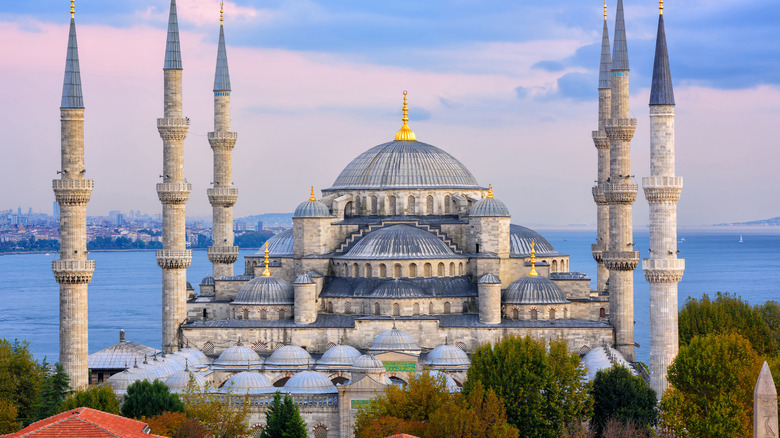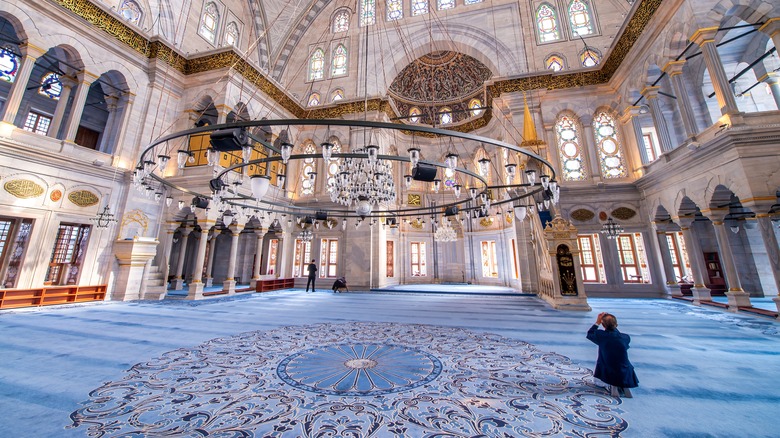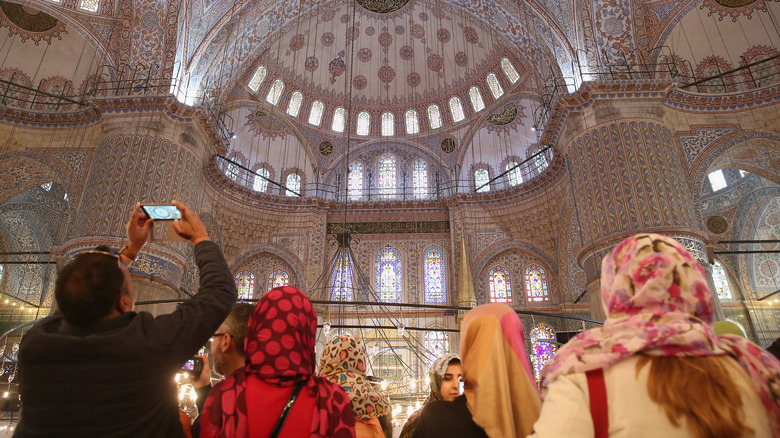The Blue Mosque Is Great Way To Kick Off Your Trip To Istanbul
Those who love history tend to travel the world to gawk at structures that people from hundreds and thousands of years ago created. It's a fun way of getting your nose out of a textbook and quite literally walking into the history that influenced our lives centuries later. Some popular historic cities we've all most likely heard of are Rome, Athens, Greece, Prague, Boston, Paris, and Kyoto, Japan. But, have you ever been to Istanbul? According to Turkey Travel Centre, Istanbul is renowned for serving as the capital of multiple historically influential empires, from the Roman to the Ottoman era.
If you'd like to get a taste of Istanbul's history, we believe taking a trip to the Blue Mosque will be worthwhile. This magnificently large place of worship was built in 1617 and is thought of as one of the Ottoman empire's last original structures, per Khan Academy. However, before planning your trip, we've provided everything you need to know before traveling to this historic wonder.
Designs you likely won't see anywhere else
The Blue Mosque gets its name from the exquisitely beautiful blue tiles that cover the walls, (via Blue Mosque). It was built while the area was under the rule of Ahmed I, and inside is the founder's tomb, a madrasa, and a hospice. As visitors step up to the entrance, they're met with extravagant architecture, which was influenced by both the Byzantine and Ottoman empires, as well as showcasing iconic Islamic religious elements. An interesting architectural feature of this mosque is that it has six minarets. This design choice drew criticism because the Masjid al-Haram (Mecca's Great Mosque and the holy site that houses the Ka'ba) also had six raised pillars. The Sultan solved this issue by sending a seventh minaret to the mosque in Mecca (via Anadolu Agency).
As visitors make their way inside, they're instantly surrounded by over 20,000 hand-made tiles and an army of ceiling domes filled with beautiful patterns. There are a few upper levels that contain over 200 stained glass windows, and guests can gaze at the large chandelier, which holds a few ostrich eggs in order to keep away cobwebs and spiders.
Rules to follow
Although a popular tourist attraction, the Blue Mosque is an active place of worship that all guests should ensure they respect. According to Blue Mosque, this historic structure is open every day to visitors, however, it is closed to those who wish not to pray during specific times, collectively called Salat (Fajr, Zuhr, Asr, Maghrib, and al-'Isha). Prayer is undertaken in coordination with the Sun's position, and so exact times will change each day. But for visitors who aren't praying, dawn, noon, late afternoon, and sunset are times to block out when hoping to catch a glimpse inside. However, if you'd like to pray during these times, you will be allowed to enter. Either way, before you head over to the Blue Mosque, make sure you're dressed in the proper attire.
To enter, women must wear a head covering to hide their hair, something to cover their shoulders, and long pants or skirts. Men must also wear long pants. As you approach the entrance, you must remove your shoes and put them inside a plastic bag, which will be given for free. Also, it's urged to remember to stay quiet and to turn your flash off before taking photos.


